The L127 Pleco, scientifically known as Peckoltia Lujani, is a beautiful fish in the Loricariidae family (Plecos). This pleco adds beauty and a diverse look to your aquarium that will grasp any viewer’s attention. They are very peaceful species and will not cause any disruption in the tank or their tank mates. They are very low-maintenance fish and super easy to care for, but if you want your Lujans Pleco to thrive, you might need to make some changes to your aquarium.
So continue reading to have a better understanding of L127 Pleco (Lujans Pleco) and provide them a healthy habitat.
Species Profile & Overview
The L127 Pleco ( Lujans Pleco ) is a rare type of pleco that can be found in the Orinoco River in Colombia. While they share the same body shape as other members of the pleco family, they develop unique colors and patterns that set them apart.
They are commonly known by one of the following names L127 Pleco, Lujans Pleco, False Zebra Pleco, and Peckoltia Lujani. All these names are different representations of the same fish.
Same as the rest of plecos, they have a bony back that protects them from predators in the wild and in the aquarium. Their flat body is perfectly adapted to crawl under rocks and decorations to hide from other fish or to rest.
In the wild, L127 Pleco lives in rivers and creeks packed with live plants, freshwater algae, driftwood, and rocks with sand and muddy substrate. They are mainly active at night and will constantly forge around for any available food.
Caring for Lujans Pleco can be a rewarding and easy experience when tank parameters are right. They make a great tank mate for most fish in a community tank or can be the showpiece in a single species aquarium.
Appearance:
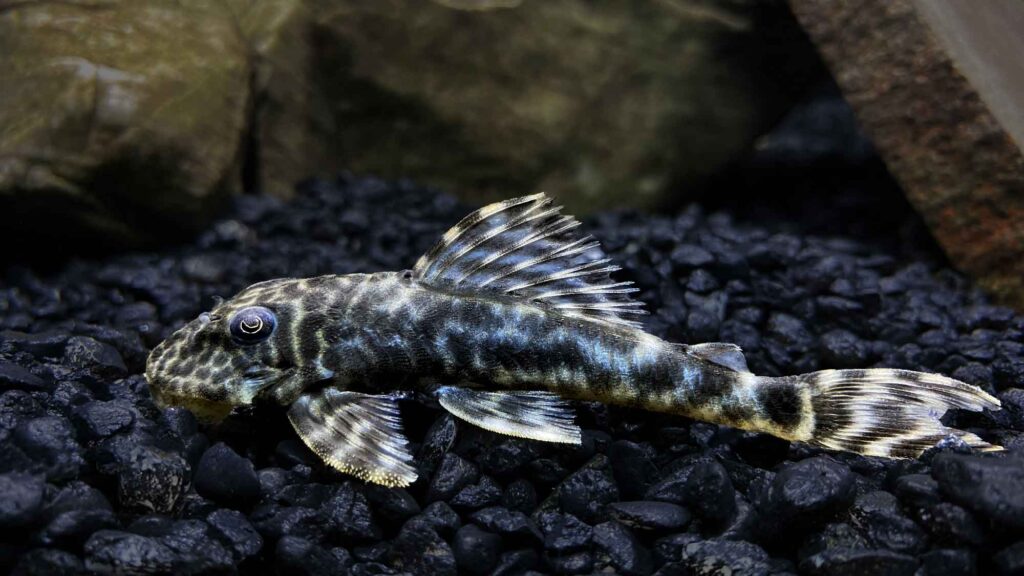
L127 Pleco shares the same visual characteristics as the rest of pleco fish but they developed slightly different characteristics. They have a large head, narrow tail, downturned mouth, and large fins. The eyes are on top of the head where they can constantly check the water column for predators. What sets this fish apart from other Loricariidae fish is its unique colors and patterns as well as its slim body shape.
As shown in the figure below, like all pleco species, they have 8 fins in total across their body. All of their fins are relatively large and somewhat curved rearward in relation to the body. Although transparent, fins still have the same pattern as the body.
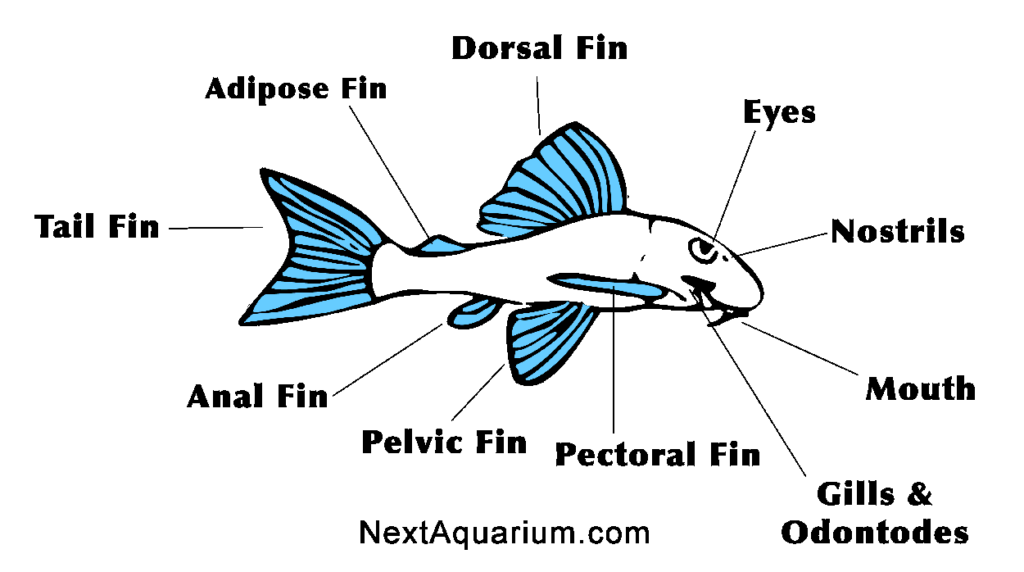
The base coloration for Lujans Pleco is bright whitish yellow that has dark black patches all over their body. The pattern continues on the fins but the belly area is usually yellow without any dark spots.
Making your tank conditions close to what these fish get in nature will increase the contrast of the patterns on the fish. The right diet and low stress levels are important factors in developing beautiful patterns.
Adult Size
When they are fully grown, the average L127 Pleco size is around 4.5 inches in length. Males and females look very similar in terms of body size. But females tend to get slightly rounder compared to males.
In rare cases, some individual specimens have reached slightly bigger sizes. This is a very rare thing to happen and is not common among all L127 Plecos.
Lifespan
In captivity, L127 Lujans Pleco lifespan is around 8-10 years. To ensure your pleco reaches this age you will need to keep your tank water in pristine conditions and prevent disease from being introduced to your tank.
Behavior and Temperament
Lujans Pleco mostly stays at the bottom and does not swim in the water column. They do not pay any attention to other fish swimming above and will mostly stay at their favorite spot. During the day they prefer to stay in hiding and come out at night to look for food.
However, when they are hungry and feel safe, they will venture out during the day as well. They are shy species and will hide if someone walks past your aquarium. But will come to eat as soon as they feel safe.
Males can get territorial and protective of their caves or their favorite hideout. When tank space is low, they might fight with other bottom-dwellers (including plecos) when they come close to their territory. While they are generally very peaceful fish, you will need to make sure each fish have its own hiding spot if you have more than one of them in your tank.
Adding more pleco caves, rocks, and other hiding spots will prevent aggressive behaviors between the males. If you still see aggressive behaviors or fights, you should move the fish causing the fight to a new tank.
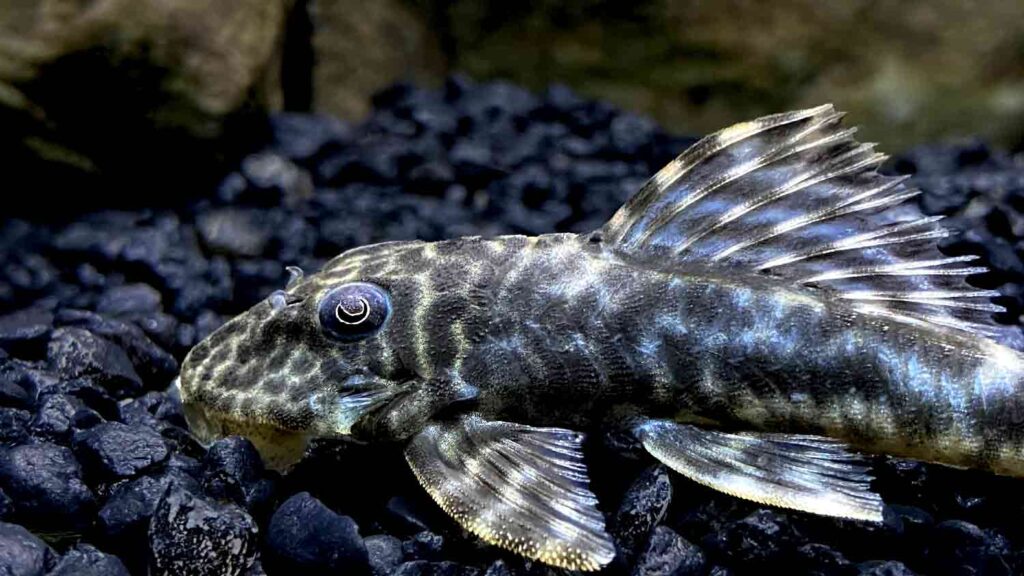
L127 Pleco Care
The L127 Pleco Care is NOT exceptionally difficult, even beginner aquarists can keep them in their aquarium with no issues. That said, these fish need clean and well-oxygenated waters to stay healthy.
To provide the best possible living environment and care for your L127 Pleco, you should follow the recommendations we made below.
Tank Size
The minimum tank size for a single L127 Pleco is 30 gallons. These fish are one of the smaller plecos, this makes it possible for aquarists to keep them in small and medium aquariums. However, the larger the tank the better it is for this fish. Large tanks will make a better job at keeping stable water parameters. This means less water changes for you.
If you are planning to keep more than one Lujans Plecos then you should defiantly get a bigger tank. These freshwater fish need ample bottom space and lots of hiding spots. So the gallon that your tank can hold is not the best way to calculate how many plecos you can keep in your tank.
Because L127 Pleco prefers to stay at the bottom of the tank and rarely swims in the water column, an aquarium with a wider bottom is recommended. Tanks with more width have more floor space so it will make it possible for you to add more plecos.
Tank Setup:
Setting up the right habitat for L127 Pleco is vital for the overall health of this fish. They are very shy and nocturnal species that need to hide and rest during the day. If they can’t find a dark place to hide, during the day, they will easily get stressed which can cause stress-related diseases.
To make this fish comfortable, you will need to add many caves and create hiding spots by carefully placing decorations. While pleco caves are the ideal way to create hiding spaces, female Lujans don’t show much interest in them. Ideally, you should have a mix of caves and also shaded areas made of driftwood, rocks, and slates for your tank.
Sand is the closest aquarium substrate to what’s found in the L127 Pleco natural habitat. These fish have a soft belly that can easily get injured if the substrate is sharp. So they will need a soft and fine substrate to live comfortably. Smaller pea gravels are also acceptable options, their round corner-less shape will not harm the fish but it’s not as comfortable as sand substrate. Some of the planted tank substrates are also great options especially if you want to have plants in your aquarium.
Plants are an important part of any ecosystem to function properly. Aquatic plants will filter your aquarium off contaminants and fish waste while providing plenty of hiding places for your fish. You can also use floating plants to create shade in the tank that will make your fish feel safe and come out more. You can pick plants based on the type of light your aquarium system have, hardy plants are easy options if you do not have experience with aquatic plants.
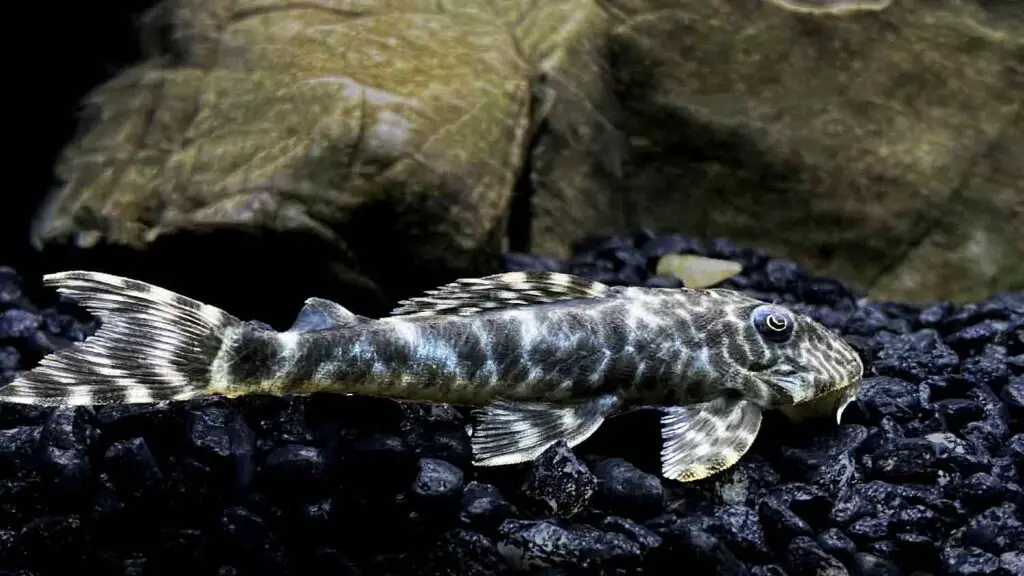
Water Parameters:
Replicating the natural habitat of L127 Pleco is the best way to keep these in the aquarium. This will keep your fish happy and healthy. However, this might not be an easy task for many people. You might live in an area where your tap water has different water parameters. It might be either very hard or very soft water, so this is something you have to check before buying Lujans pleco. This fish does well in neutral or slightly acidic waters.
If this is the case for you, you might need to look for a way to achieve neutral water before getting this fish. They also need warm water that is highly oxygenated so a heater and air bubbler are necessary. Below are the tank parameters you can keep Lujans Pleco plecos in:
- Temperature: 75 – 82 Degrees Fahrenheit
- PH: 6.5 – 7.2
- TDS: 100 – 200 PPM
Investing in a reliable TDS (Total Dissolved Solids) meter is highly recommended. With a TDS meter, you can monitor the amount of dissolved solids including fish waste and other organic matter in the water. Every time your tank’s TDS crosses the ideal range you will need to perform a water change. TDS meter as well as a good test kit will help you maintain perfect clean water parameters for your pet pleco.
Lighting:
When the aquarium setup is done properly, L127 Pleco can adapt to any lighting conditions. These fish prefer to hide during the day and when the light is on. They will need a place to hide when the lights are on.
When selecting light for your aquarium, it is best to pick the light in accordance with the kinds of plants you are keeping in the tank.
Filter System:
L127 Pleco needs clean water, so a good well-established, and cycled tank is necessary. These fish produce a lot of waste, so a strong filter is a must-have for them. We recommend having a filter that is rated at least 2 – 3 times the size of your aquarium.
When filtration of your tank can’t keep up with the waste production, your pleco will suffer and face health issues. Good filtration will expand the lifespan of your fish by keeping the tank clean and healthy.
Common Diseases and Prevention
L127 Pleco are hardy and not sensitive species that will not easily get sick. However, when water parameters and diet are not in their favor they tend to easily get sick. Stress is another factor casing sickness for this fish.
That said, like all freshwater aquarium fish, they are also susceptible to all common aquarium diseases that might get introduced to your tank by new fish. Ich, and fungi diseases re among common diseases these fish get.
Prevention is the most painless way to keep your L127 Pleco healthy. When you maintain clean water parameters and take care of your tank you are actively eliminating most of the risks threatening your fish’s health. The water quality, diet, and hiding spots are the main aspects of care for Lujans Pleco. Regular water changes and tank maintenance will decrease the chances of your fish getting bacterial or fungal infections.
Diet and Feeding Requirements
You can give L127 Pleco a wide variety of items to choose from in order to satisfy its appetite. Because of this, they are one of the plecos that are the least difficult to feed. As omnivorous fish, they will consume both plant-based and meaty foods in their diet. Consequently, high protein foods should be used as a supplement and plant-based foods as the primary component of their diet.
As mentioned above, these fish are omnivores and should receive a diet of both protein and plant-rich foods. For protein sources, you can use live or frozen foods like brine shrimp, tubifex, bloodworms, and other available sources sold in pet stores.
Dry foods like sinking pellets, algae wafers, and shrimp wafers are the ideal diet they should be receiving daily. A good mix of these dry foods will provide your fish with all the nutrition it needs. Plant-based pellets or fish flakes mixed with low amounts of high protein foods is the ideal combination to feed regularly.
It is best for them to consume commercial dry foods as their primary source of nutrition. Live or frozen foods should serve as a supplement to their diet and not the main food. Plecos scavenge in the tank’s bottom, therefore it’s important to give them sinking fish foods. The best time to feed your plecos is at night, and you shouldn’t give them more than they can eat before morning.
Breeding L127 Lujans Pleco
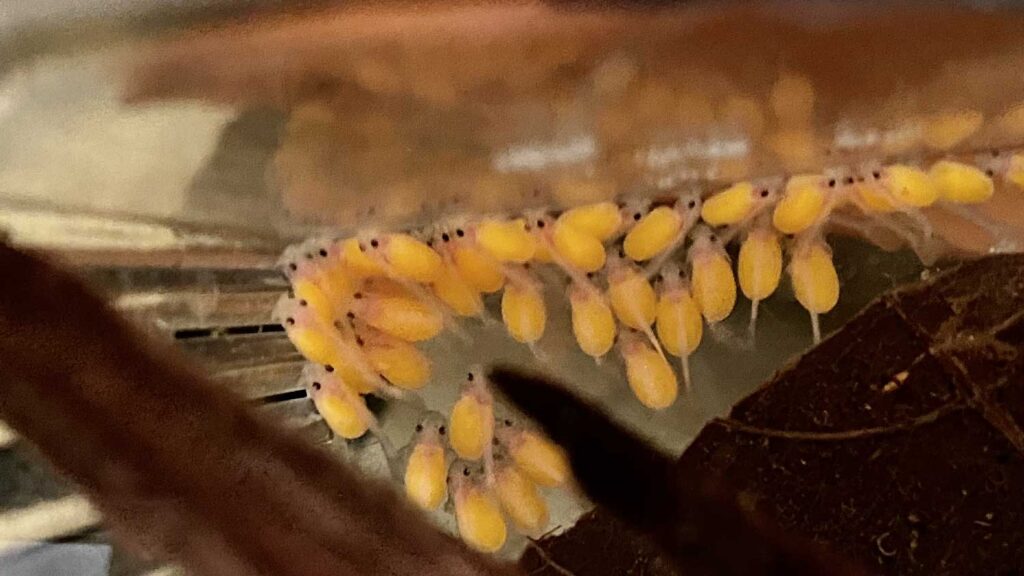
Breeding L127 Plecos can be done in aquariums if the right conditions are made. In order to breed these fish, you will need your Lujans Plecos to be mature and at least 3 years old. A group of 6 plecos is a good starting point to breed. Once you confirm you have at least one male and one female in your breeding group, you can start the process of conditioning them to breed.
High protein foods and large water changes will trigger spawning in them. When changing water, you should use cold water so the tank temperature drops by 3 – 5 degrees Fahrenheit.
If you have many male specimens in your breeding group, make sure one cave is available for each. Lujans Plecos are cave breeders which means they only breed in a safe and secure cave. The cave should be slightly bigger than the male’s body so he can go in and out. But it should be small enough that he can trap the female inside.
Once the finds a suitable cave he will trap the female and will not let her leave the cave until she lays eggs. Once eggs are laid, the male will set the female free and then he will fertilize and guard the eggs.
It’s the male job to guard the eggs until they hatch. During this time, the male cleans the eggs and fans them so the eggs don’t go bad or get molds.
Depending on the water parameters, the eggs usually hatch 5-10 days after being laid. and will stay in the cave for another 7-10 days until their egg sac is gone. At this point, they are strong enough to take care of themselves. At least according to their parents.
Tank Mates
L127 Pleco can make a great addition to any community tank as long as the tank has adequate floor space. The tank setup and the placement of the decorations have a direct effect on the behavior of your fish. To make your tank safe for Lujans Pleco and other tank mates you should pay close attention to the “Tank Setup” section of this article.
The Lujans Pleco love to live in soft and warm waters. This means you will need to select other tank mates that can tolerate the same water parameters. Most non-aggressive South American fish are ideal tank mates for your L127 Pleco. However, stay away from larger, aggressive fish that might try to eat or hurt your pleco fish.
The following fish can live in the same aquarium as this species:

Conclusion
Now that you’ve learned everything there is to know about L127 Pleco (Lujans Pleco) care and what this species requires to thrive, it’s time for you to decide whether you can house one or not. If you can provide the necessary care we mentioned in this guide you can safely give them a try. These fish are fun to watch and will make great community fish.